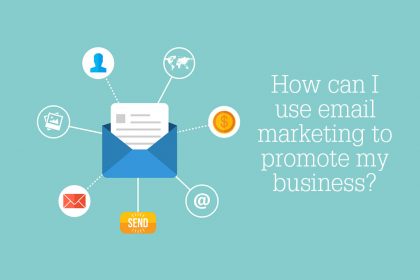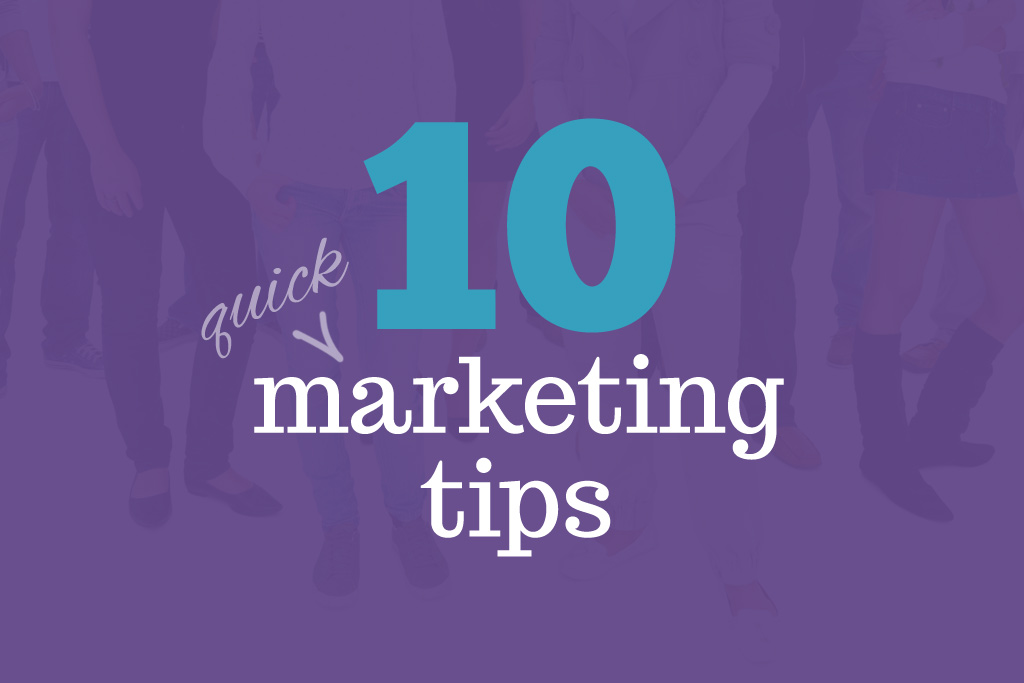The 12 biggest marketing mistakes you need to avoid
Can’t work out why your marketing isn’t resulting in the sales you hoped for? Here are the 12 biggest marketing mistakes small businesses are making – and how to avoid them.
Whether you’re a startup business, heading into a new marketing role, or taking your brand out of the Stone Age and launching it into the digital sphere, you’ll undoubtedly come across some speed bumps along the way.
Many small businesses slip-up by making avoidable mistakes and not using 360 degree thinking in their marketing. They put all their eggs in one marketing basket (such as social media), at the expense of other essential tasks (email marketing, for example).
The 12 biggest marketing mistakes you need to avoid
To help you take a more holistic approach to marketing, we’ve identified the 12 biggest small business marketing mistakes. Find out how many you may be making, and how to stop!
1) Inconsistent content
Heard the phrase, ‘content is king’? In an era where online is taking over print, and bloggers are becoming more influential than magazine journalists, great online content is everything.
But while almost anyone can create interesting and engaging content (read here to find out why you don’t need to be interesting to write a great blog), your blogging efforts need to be consistent to build any real traction.
If you look at successful businesses, the chances are they’ll have a company blog which is updated weekly. Indeed, research shows that companies with blogs produce 67% more leads per month than businesses without one.
So how do you ensure your blogging is consistent, and that you’re putting out quality content month after month? For this you need a realistic content plan. (You can read an easy four-step formula to creating one here.)
2) Not engaging on social media
It’s not enough to just ‘be’ on social media today; you need to actually engage with your customers using it. Because, while you may see social media as a promotional tool for your marketing messages, your customers see it as an important, if not their preferred, communication channel.
Indeed, one social media study found that 67% of consumers use a company’s social media site for customer service, and 33% actually prefer to contact brands via social media rather than by phone.
So, while it’s still essential that you have a well-planned social media marketing strategy, you can’t afford to ignore your engagement responsibilities. This means understanding which social media channels your customers prefer, and ensuring you have an engaging and responsive presence on them.
3) Not going mobile
If your site isn’t already mobile responsive, you need to make fixing this top of your list of marketing priorities. Why? Because mobile traffic has now overtaken desktop and 36% of all UK online sales are now made on a module device (this rises to 40% for clothing and apparel).
Google also penalises non-mobile websites. So not only do you risk losing sales by not being mobile-friendly, but your site will be harder to find and use for over half of your visitors. And if your competitors are already mobile, you risk losing business to them.
4) Too much hard sell
While it’s certainly important to be selling, no customer likes a hard sell. Nor do they appreciate being bombarded with emails, social media posts and phone calls promoting what you do every day. So if you suspect you may be verging in the hard sell at times, reign it in.
You don’t need to have SELL in large letters to be selling. A subtler, more welcoming sales message works far better. Just talk to your customers (not at them) and find out what they want to talk about; what problems they need to solve; and what they like to see from you.
Send them regular newsletters that inform and engage as much as sell (here are 14 things your newsletter needs to include), and start conversations on social media. Then, when you do actually want to sell, make sure you know how to write powerful sales copy that works (rather than offends).
5) Ignoring negative feedback
No business likes complaints or poor reviews. But it’s almost inevitable that, as hard as you may try and as great as your products or services may be, you’ll have a disgruntled customer at some point. And the worst thing you can do is ignore them.
Not only do you want to ensure that every negative review or feedback is publicly addressed, but if a customer feels like their complaint is being ignored they’re more likely to become more vocal – and spread their discontent to a wider audience.
Handled well, you can turn negative feedback into positive PR for your business. You can show that you genuinely care about your customers and the quality of your offering, and even turn an unhappy customer into your biggest fan.
Complaints are actually a great opportunity to identify potential weaknesses in your business and improve on them (for every one customer who complains, there are probably another four who are equally unhappy but don’t tell you).
Here are some articles on customer feedback you may find helpful:
- Five ways you can use customer feedback to improve your business
- Five signs you need to rethink your customer experience strategy
- How to repair a damaged online reputation
6) No social media strategy
We’ve already touched on social media, but there’s one more thing we need to address: your social media strategy. If you don’t already have one, now is the time to start planning it!
Because you can’t just dip in and out of social media when you’re a business. Your customers will expect you to be consistent – not only in your frequency of posting, but in how you speak and the kind of content you share. And to ensure you meet your customers’ expectations you need a plan.
So how do you get a social media strategy? If you’re on Twitter, then you’ll find everything you need in Twitter Tune-up. You can also read 10 steps to building a social media strategy that works here.
7) Failure to measure results
It’s all well and good planning a brilliant marketing, content or social media strategy, but how do you know whether it’s working or not? And if not, what do you do next?
The only way to know for sure is to measure your results. To have a baseline to start from, then experiment with different strategies and see what impact they have on your baseline. You also need to make good use of any analytic tools, like Google Analytics, at your disposal. And you need to check them regularly.
By keeping a careful eye on your marketing you’ll start to get a clear idea of what types of strategy work with your customers, and which don’t. So you can do more of the great stuff, and stop wasting time and money on activities that don’t work.
8) Having a loose strategy, or no strategy at all
You’ve probably worked out by now (if you didn’t already know) that having a marketing strategy of some kind is important. But you also need to ensure that your strategy is properly thought through.
If you’re not clear on your objectives, and how you’re going to meet them, you risk creating a meandering strategy that may make you feel a bit better because you’ve ticked ‘strategy’ off your to-do list, but deep down doesn’t give you much confidence. A woolly strategy also won’t get you much closer to your targets.
It’s even more important to nail down a clear strategy if you are delegating tasks or responsibilities to other people, including a social media manager. A recent study into business development found that 75% of employees lack confidence in the success of projects with “fuzzy business objectives, out-of-sync stakeholders, and excessive rework.”
You’ll find these articles helpful when planning a marketing strategy:
- The six stages of the buying process – and how to build your marketing roadmap
- The five questions every marketing plan must answer
- Five steps to creating a startup marketing plan
9) Not knowing your customer
How well do you know your customers? What do they love about what you sell? Why do they need it? Where do they live and work? What do they do in their spare time? What blogs do they read?
While you may think that some of this is irrelevant, the truth is that the more insights you have into your customers, the better you’ll know them. And the better you know them, the easier you’ll find it to create products and services they’ll want to buy, and to know when, where and how to talk to them about what you do.
So if you don’t have a really clear idea about your ideal customer, we recommend doing some research now. Here are some articles to get you started:
- Why you need to get to know your audience – and five ways you can
- How can I identify my target audience?
- Why audience insights are essential to your business (and where to find them)
- How to create a marketing persona for your buyers
10) Ignoring market research
Not conducting market research before you launch a business or new product or service is a big (and potentially expensive) mistake. Ignoring market research is unforgivable (just look at what happens to most Apprentice candidates who do!).
If you’re going to go to the effort to find out what your audience needs, wants and loves (and what they don’t), then use that knowledge. If you overlook what your market research tells you, you risk losing customers and sales, and even alienating loyal buyers and fans.
So if you gain any insights into your audience, whether planned (through market research and surveys) or accidental (such as feedback on social media or custom complaints) listen to what people say and act on it. Your business (and your customers) will thank you.
11) The wrong branding
Branding is a vital part of a business’ success, so it’s important to get it right. Not sure what ‘branding’ covers? It’s basically anything you do or say that helps people to build an impression of your business. It’s your brand’s personality.
The most obvious branding element is your logo. And while your logo is hugely important, it’s very far from the only branding you need to consider. You also need to think about your tone of voice: how your business sounds when you talk in emails, on social, media and on your website.
And your general visual image is important too: what colours, typeface and imagery will you use on your website, printed materials and social media?
Once you’ve thought your branding through you need to ensure it’s consistent. So if someone visits your website, then your Facebook page, and then receives an email from you, they all look and sound like they’ve come from the same company.
So what do you need to build a great brand? Here are some things that will help you:
- How to work out your business’ USP and where to use it
- Five things you need to consider to create a memorable logo
- Three ways you can bring out your brand’s personality
- What you need to know about using stock images for your business
12) Not working out your budget properly
One of the hardest parts of planning a marketing campaign is working out what budget to invest in it – and where to spend it. Invest your budget wisely and you’ll see a healthy return from it. Fritter it away and you’ll just be frustrated – and poorer!
To help you ensure that you plan your budget wisely, we recommend reading these five easy steps to planning your marketing budget and this quick guide to getting the most from your marketing budget.
Don’t make these expensive marketing mistakes!
We hope you’ve found this article enlightening – and helpful. Please do follow the advice in it; marketing is incredibly powerful when used properly. But can be an expensive waste of your time and money if you make these mistakes.
If you’d like to read more advice on how to marketing well, we recommend these articles:
- The six stages of the buying process – and how to build your marketing roadmap
- The five questions every marketing plan must answer
- The Rule of Seven – how to deliver the seven marketing touches
- Five ways small businesses can create effective marketing campaigns
For expert advice on direct mail marketing and more, visit Romax, a market leader in print and direct mail services.










